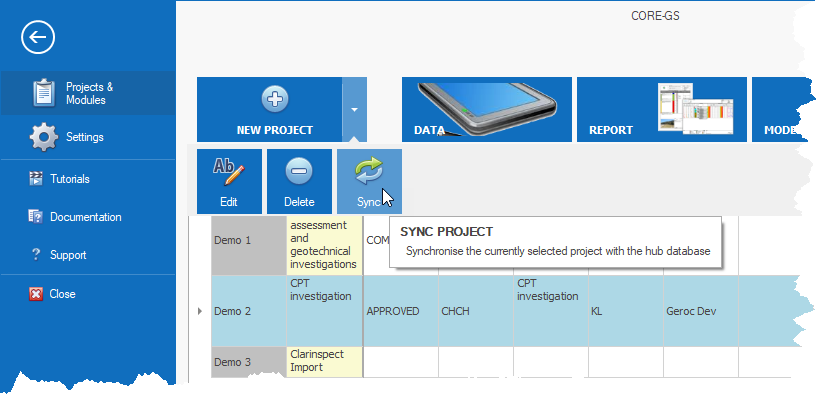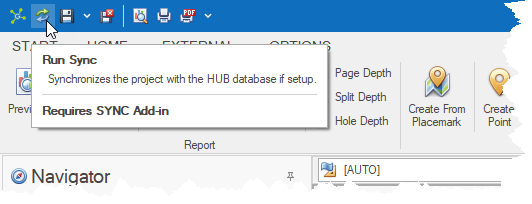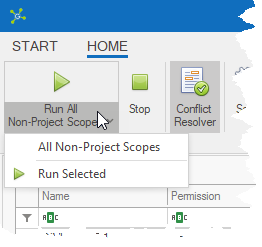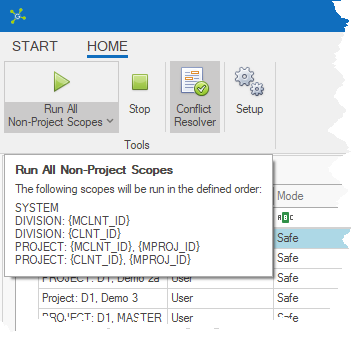Creating Projects
When project scopes are used, additional options to run these scopes are enable on the Start Screen and Data Module:
Start Screen |
Data Module |
|
|
When creating a new project from the Start Screen, with connection to the remote database, the user can choose between getting an existing project from the hub (remote) database using the Synced option, or created a new project in the spoke (local) database using the Standalone option:
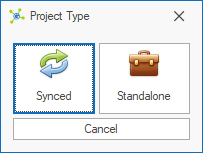
Choosing the Synced option, a list of projects in the hub (remote) database that are not already in the spoke (local) database is shown for the user to select from:
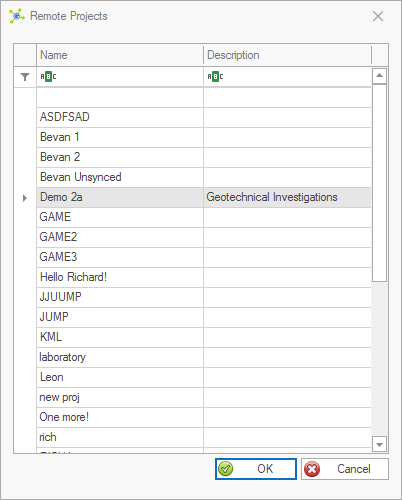
After clicking OK, the project is provisioned automatically, then the initial synchronization is run:
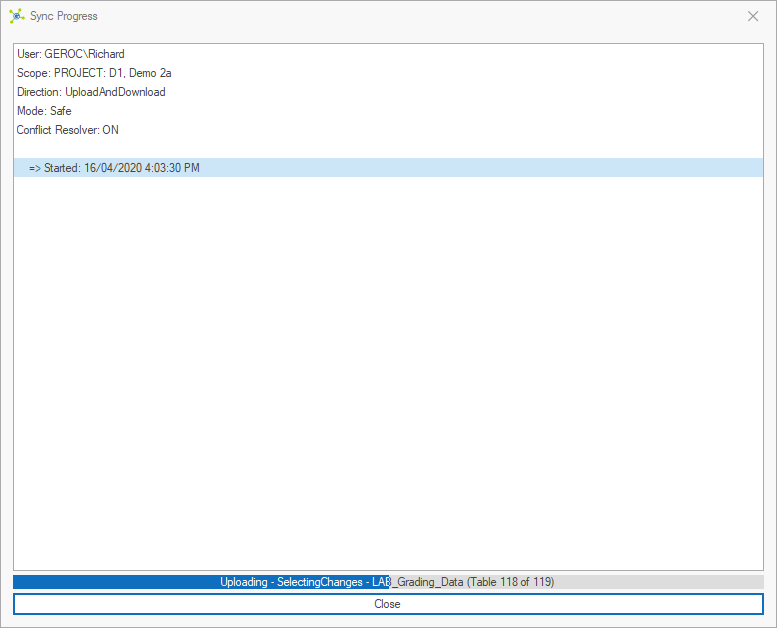
If connection to the hub (remote) database is not possible, only the Standalone option is enabled to create a project as normal in the spoke (local) database.
Uploading Standalone Projects
If a project has been created using the Standalone option, the Send to Hub button can be used to create the project and provision synchronization in the hub (remote) database.

If the project already exists in the hub (remote) database this method cannot be used, and the following message is shown:

The current recommendation in this case is to transfer data to the hub (remote) database using an XML file. Once this is imported into the hub (remote) database, delete the project in the spoke (local) database and then create a new project using the Sync option to get the data back in the spoke (local) database.
Using the SYNC Add-in
All scopes can be run from the SYNC Add-in by selecting a scope and clicking the Run button on the ribbon, or double-clicking a scope:

Depending on the synchronization configuration there may be two or more scopes defined. At least one of the scopes will handle synchronization of non-project related reference data and one or more will handle synchronization of project related data, including templates.
Playlists can be created to define groups of scopes to run in order:
|
Variables (i.e. {CLNT_ID}) are replaced with the current division value. |
Conflicts
Conflicts which can occur as a result of incorrect configuration (i.e. tables in the wrong order), missing or changed lookup values, changing the visible key value to one that exists on another device and changes to the same record in multiple devices.
To avoid conflicts:
•Sync as often as possible - the more frequently data is synced, the less chance that a conflict will occur.
•Setup new projects in the remote (hub) database, then use sync to get the project data into the local (spoke) databases.
•Avoid working on data that another device is also working on (i.e. BH-1)
The Record Conflict Resolver allows a user to choose which version of a record that has changed in both databases is retained:

Notes
If you want to remove data from a spoke (local) database that is included in a synchronization with the remote database, the scope must be deprovisioned before deleting any data. If this is not done, data will be deleted from the remote database if the scope is run.
